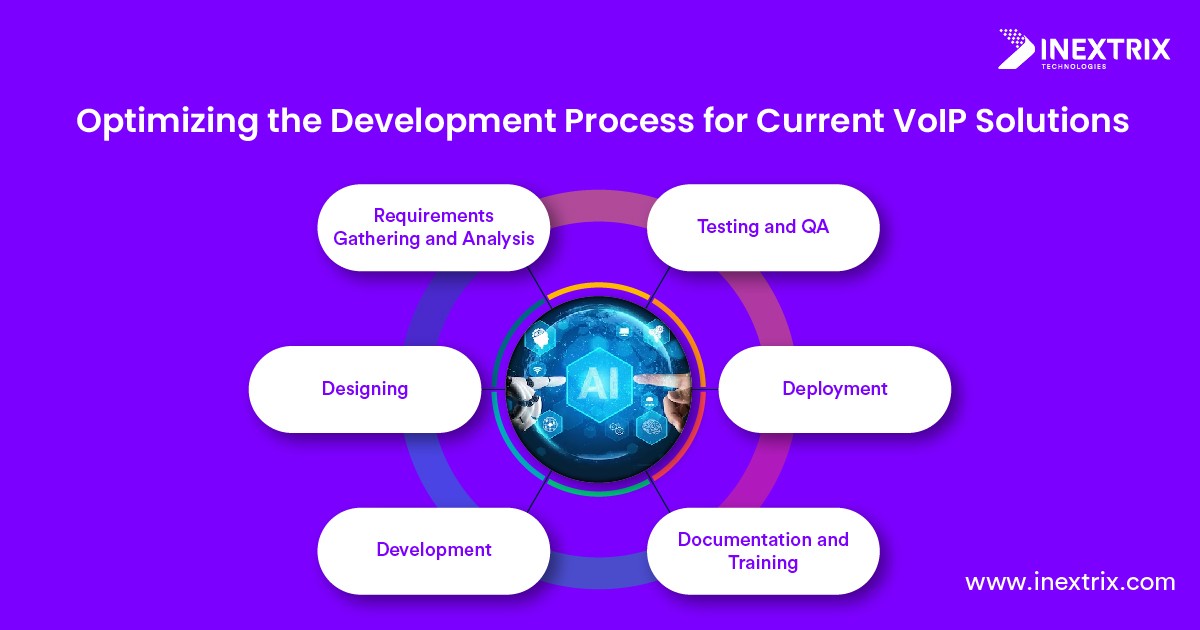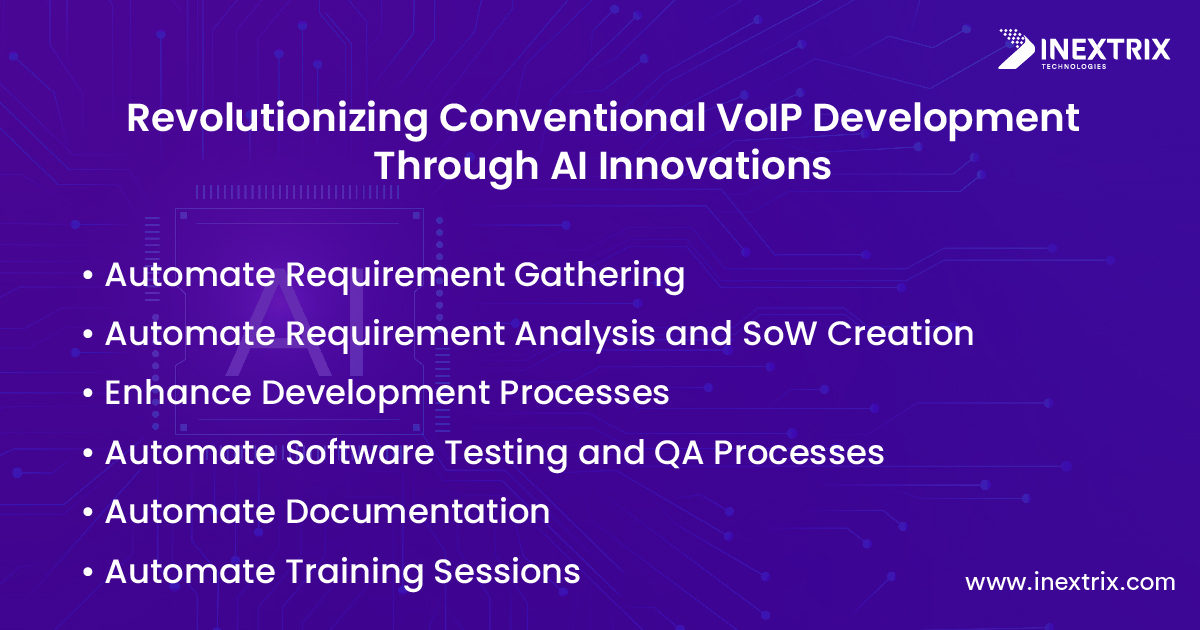The world is moving fast and dynamically. Therefore, businesses need to work smarter and faster. This has increased the importance of mobility and communication solutions that support mobility. VoIP application development practices are always adaptive to technologies. Indeed, VoIP software development companies have already revolutionized the communication solutions development space. Moreover, these companies offer powerful communication solutions to businesses and individuals. As a result, they can enjoy a more streamlined and economical means of communication via the Internet. Furthermore, they can get over challenges and overpriced expenses related to using traditional phone infrastructures.
Certainly, in the past few years, VoIP has emerged as the most reliable, flexible, and delightful means of communication. This has attracted the attention of several inventors and tech companies to find even more powerful tools that can empower VoIP based communication solutions.
Maximize your business potential with our bespoke VoIP application development.
Undoubtedly, one of the biggest players that is influencing the VoIP industry and VoIP software development processes is AI (Artificial Intelligence) technology. Indeed, AI is popular for its ability to empower machines with human-like cognitive capabilities. As a result, AI has already reinvented the wheel for several industry verticals. Moreover, AI can strengthen the efficiency, customization, and security of VoIP-based communication platforms when integrated with VoIP.
Along with VoIP solutions, the role is also bringing transformative changes in development practices and several other aspects correlated to the development of VoIP solutions. Therefore, we are going to discover more insights into this interesting subject matter in this blog post.
Are you curious to explore more details about this interesting topic?
Then, let’s not wait anymore and get into the details of this interesting subject matter.
1. Understanding VoIP App Development
You must have a basic idea of the development process. Fundamentally, experienced developers use some technologies, perform coding, and build a practice solution that meets certain predefined goals without any bugs or errors. Generally, people talk about web and mobile app development services that are used to build websites, web applications, mobile apps, and similar products. Likewise, VoIP software application development is the process of developing custom apps using different VoIP technologies.
For example, a development company uses any of the following technologies, WebRTC, FreeSWITCH, Asterisk, OpenSIPs, or Kamailio, to develop a telephony solution like a class 4 Softswitch solution. Moreover, the development company can use multiple VoIP technologies for developing the system. For example, to develop a call center solution, development companies often use Asterisk or FreeSWITCH along with WebRTC.
In short, the development process in VoIP is to build telephony, communication, or any other type of VoIP solution to meet the predefined requirements of the users. Notably, there are different types of users such as VoIP service providers, businesses, end users, and more.
2. Existing VoIP Solution Development Process

The traditional development process in the VoIP industry is similar to the existing process followed in a company offering web and mobile app development services. Traditionally, businesses used to use waterfall methodology to build these solutions. Lately, Agile, Agile Scrum, Lean, and similar methodologies have replaced the waterfall development model. Interestingly, DevOps is the recent addition as the most popular model to build a VoIP solution.
DevOps combines the power of development and operational teams from the very first stage of the development process. As a result, it ensures that the process can create a dependable harmony between the operational and development teams to avoid rework and delays in deliveries.
Whether you use waterfall, Agile, DevOps, or any other development model, there are some common steps followed in the development process. To understand this with more clarity, let’s briefly understand each stage of the development process.
Requirements Gathering and Analysis
Development company discusses with clients to define business needs and objectives for app development to identify requirements and create a roadmap for the development process. Moreover, during this process, the development company also provides consultation and proposes a technology stack to build the product.
Designing
Certainly, big projects involve the development of prototypes, wireframes, and PoC (Proof of Concepts). However, the general process in the traditional VoIP development company is to start working on the design part. The design includes designing the following components:
- System architecture
- Database
- User interfaces
Development
This is the main stage of VoIP application development. In this stage, the team of experienced developers code different features and modules. Moreover, they put together code to build an executable program that can act as a VoIP solution and meet the predefined goals and objectives. Furthermore, developers will also integrate third party applications to add additional functionalities to this VoIP based communication app.
Testing and QA
The next step carried out is testing and QA (Quality Assurance), which includes functional and non-functional testing. However, coverage of test cases completely depends on the association with the development company and the scope of work.
Deployment
The final stage is the deployment of the developed system. The technical team will deploy the system on on-premises servers or cloud hosting platforms selected by the client company.
Documentation and Training
The final stage of the existing development process for VoIP solutions covers documentation and training. This documentation may include complete documentation of processes, use cases, user manuals, technical guides, and tutorials. Alternatively, it could include just a technical guide giving a user manual to use the product. Along with the product documentation, the VoIP software development companies provide training to the client company. Training will cover a walkthrough of the product. Moreover, it can cover technical training to edit some configurations.
This is the common process of developing a VoIP solution for the company. Additionally, it may have technical support and ongoing development to add innovative features to the developed product. However, this is subjective and depends on the company that develops the product. Moreover, even if the product is developed for its own use or VoIP service provider, all these steps are followed to ensure the right process and seamless adoption.
Notably, all these steps are manual. Significantly, all the steps involve human professionals taking care of everything. Even if machines are taking over, the traditional development process is still overpowered by manual jobs and tasks.
3. Major challenges with the existing VoIP solution development process
There are several challenges involved with the execution of the manual process. Let’s take a look at some of the major challenges briefly.
3.1 Slow
Certainly, everything is dependent on human agents or professionals. Therefore, everything is done at the speed of a human. Undoubtedly, humans are slow compared to machines and AI algorithms. Therefore, the development process is slow with the traditional approach.
3.2 Human-Intensive
Each stage in the conventional development model includes several professionals. Moreover, these professionals must have substantial experience and expertise to make wonders in the VoIP industry. Alternatively, things would go in vain. Humans are quite slow, and their skills are limited.
Empower your enterprise communication with our specialized VoIP application development.
For example, a business developer cannot code, and a coder cannot build a relationship to decode requirements like a business developer. Therefore, the traditional approach required a big team of professionals.
3.3 Prone to Errors
Humans are known for making mistakes. Certainly, these mistakes are smaller or bigger. Moreover, they can be made subconsciously or unknowingly. Furthermore, developers sometimes compromise quality by letting bugs stay with a comment, “Known Bug”. Funny but true. Therefore, a final product might have some known or unknown bugs or quality issues even if they go through a vigorous development and testing process.
3.4 Expensive
Certainly, a manual process is slow and involves many experts. Therefore, it is expensive because the company investing in development needs to compensate professionals as per the standard hourly wages.
4. AI Redefining the Traditional VoIP Development Approach

The VoIP industry has been managing with so many discrepancies involved in the VoIP software development process because of the complete manual approach. However, we are all lucky to have revolutionary technologies coming across and bringing revolution in all aspects. Definitely, development processes have also evolved with automation, analytical power, predictive mechanisms, and several other powerful features available in the AI driven process.
Certainly, AI is not going to replace developers or other team members involved in the development process. However, AI will help in overcoming all challenges. Moreover, it will make the whole process much faster, more powerful, better, quality assured, and cost effective.
Let’s explore the top ways AI will redefine the traditional VoIP development approach.
Automate Requirement Gathering
Already, AI has built a technology to gather requirements from customers. This technology helps in automatically interacting with the client company to ask predefined questions and gather as detailed or brief information as required. For instance, leveraging chatbots or conversational AI tools not only facilitates the collection of customer requirements but also extends to functionalities such as SMS broadcasting, enhancing the overall scope of engagement and communication.
Certainly, business developers may need to be involved in discussing some unsaid facts or more clarity on complicated requirements.
Automate Requirement Analysis and SoW Creation
Undoubtedly, AI is phenomenal in analyzing requirements. AI can decode even vague requirements and put it as a detailed scope of work (SoW) document. Moreover, AI can review competitors and provide a detailed SoW.
Additionally, AI can also perform analysis of technologies and compare them to suggest development technologies and roadmaps.
Enhance Development Processes
Unquestionably, you cannot replace experienced developers for VoIP software application development projects with AI tools. However, AI can help developers to work better and faster. They can replicate pieces of code. AI can help build scripts for common features like CRED functionalities. Similarly, some jobs are easy to optimize or partially optimized with AI tools and algorithms.
Automate Software Testing and QA Processes
Similar to the development process, functional and non-functional testing, and quality assurance are automated with AI tools. In fact, for several years, the industry has been using automation testing. Remarkably, AI has enhanced this testing and QA process.
Automate Documentation
AI is too fast in generating documents. From proposals to quotations, price comparisons, and many more documents, they are easy and fast to generate with AI tools. In accordance with the software development cycle, AI helps in building, reviewing, quality checking, and optimizing different technical and nontechnical documents.
Automate Training Sessions
In addition to all other jobs, AI tools further aid in automating training sessions. Certainly, AI can create fundamental training programs for businesses. Moreover, they can also play a vital role in answering common questions during these training sessions. Definitely, for complicated questions, it is required to involve experienced technicians.
Certainly, as companies offering VoIP application development services incorporate AI tools, this technology will get more advancements. Moreover, companies will get more innovative and practical AI tools to augment other jobs of the development process in the VoIP industry.
5. Challenges in Implementing AI in VoIP Development
The challenges in implementing AI in the development industry are like the adoption of AI tools in any other industry. Let’s briefly explore the major challenges.
Cost
Undoubtedly, AI enhances processes, including development. However, it requires capital investment, which is substantially high. Therefore, businesses are resistant to making this change.
Fear of Change
Humans fear change anyway. Additionally, AI is creating fear of loss of jobs. Therefore, humans are scared of losing their jobs. As a result, professionals don’t adopt AI driven tools so easily.
Concluding Note
In conclusion, AI has great potential to improve the complete development process in the VoIP industry. Moreover, it can help in reducing tedious jobs and total development costs. Moreover, it helps in boosting the quality of the product and enhancing the development process. Furthermore, it helps in augmenting deliverables. Additionally, it keeps professionals available for complicated jobs.
We are a renowned VoIP development company that embraces technology to benefit clients. We can help you adopt and implement AI in your development process. To learn more about our VoIP application development offerings with the implementation of AI tools, please contact us.
